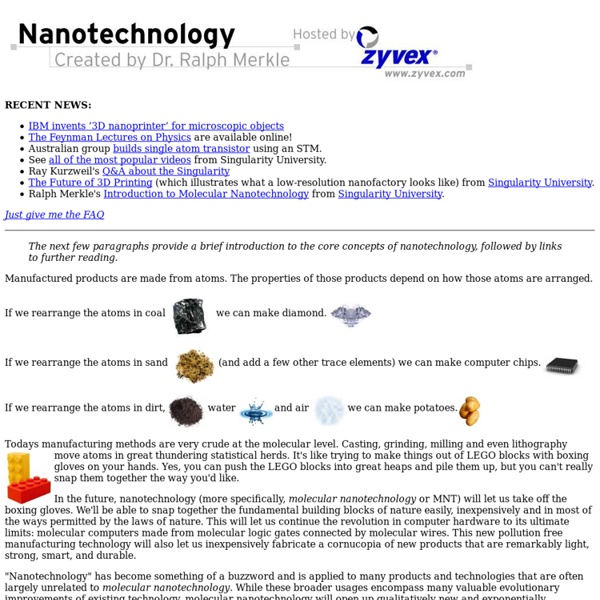Nanotechnology

Nanotechnologie
Un article de Wikipédia, l'encyclopédie libre. Les nanotechnologies bénéficient de plusieurs milliards de dollars en recherche et développement[8]. L'Europe a accordé 1,3 milliard d’euros pendant la période 2002-2006[9]. Certains organismes prétendent que le marché mondial annuel sera de l’ordre de 1 000 milliards de dollars américains dès 2015. Historique[modifier | modifier le code] Vision de Feynman[modifier | modifier le code] Dans son discours donné le 29 décembre 1959 à la Société américaine de physique, Richard Feynman évoque un domaine de recherche possible alors inexploré : l'infiniment petit; Feynman envisage un aspect de la physique « dans lequel peu de choses ont été faites, et dans lequel beaucoup reste à faire[10] ». Se fondant sur la taille minuscule des atomes, il considère comme possible d'écrire de grandes quantités d'informations sur de très petites surfaces : « Pourquoi ne pourrions-nous pas écrire l'intégralité de l'Encyclopædia Britannica sur une tête d'épingle ?
Related:
Related:



